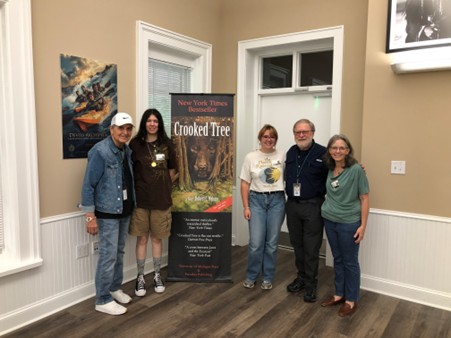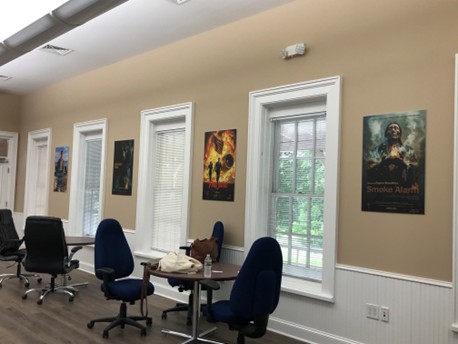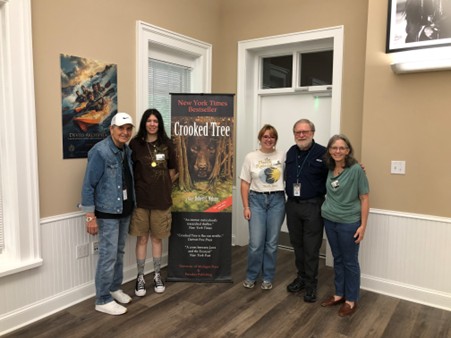There are many books and movies about Native American culture and history, but how many are made for Native communities by Native communities? The Studio of the Americas (SOTA), an independent production company, is providing, “the means and the opportunity for the First Peoples of this land to tell their own stories” (Studio of the Americas website). We met with co-founders Clifton Chippewa (Saginaw Chippewa) and Robert C. Wilson at their headquarters in Atlanta, Georgia. The company currently has 17 different ongoing movies in progress and works with tribes, like the Cherokee of North Carolina, to ensure accurate representation of the groups they present. They also discussed their plans for a SOTA film academy, which would function in partnership with the Georgia Film Academy, to provide film training for Native American children. Chippewa hopes that providing an opportunity like a SOTA film academy will help Native children heal and break historical cycles of trauma still felt from forced removal.

As Native American communities continue to assert autonomy over their stories, ancestral lands, and futures, archaeology must change. In 2020, the Southeastern Archaeological Conference (SEAC) developed an image policy for the publication of Native American funerary items. For some Native American communities, looking at an item interred with an ancestor can bring on sickness, ill health, or death until they are able to perform a purification ritual. This inherently excludes Native American individuals from interacting with archaeological journals like SEAC, archaeological communities, and providing a major barrier to becoming an archaeologist. Additionally, it is believed that once interred with an ancestor, a funerary item becomes a part of the ancestor. Therefore, publishing a picture of a funerary item is equivalent to publishing a picture of an ancestor’s body. To learn more about SEAC’s image policy, read this special issue from the journal.
Communicative, decipherable imagery can make or break public engagement for many aspects of archaeology, including site advertisement. We met with Carey Harrison, a videographer at New South Associates, to learn about photography. His biggest piece of advice is to get a good viewpoint and a wide establishing shot. From there, you can move inward to focus on individual features. He also emphasizes the importance of ensuring your viewer can tell what they are looking at. Many vague photos of a mound may be fascinating to archaeologists but just look like a grassy hill to others! Along with clear pictures, it’s important to capture informational/interpretive panels, plaques, and other sources of information at sites separately. This is so they can be easily referred to later. We were also told to take many photos, so that you have lots of choices for your final picture.

Throughout our project we must prioritize how Native communities wish for their ancestors and ancestral lands to be portrayed in the StoryMap, and incorporate their stories into site interpretation. We strive to provide an accessible, accurate experience of visitable sites to the public. With the goal of public outreach and education, and collaboration with tribes, we can provide a holistic overview of a site.

